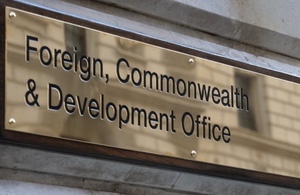Batley murderers have sentences increased
Six men have had their sentences increased following an intervention by the then Solicitor General. Usman Karolia, 20, Raja Nawaz, 19, Ahmed Karolia, 24, Nabeel Nasser, 19, Nikash Hussain, 17, and Irfan Hussain, 18, violently attacked three men on 21 June 2020.
They murdered Bradley Gledhill, who was stabbed to death and then punched, kicked and stamped upon as he lay dying on the ground. His two companions were also stabbed repeatedly.
All six men were convicted of Bradley’s murder. Four were convicted of the attempted murder of his friend, Joel Ramsden (Karolia, Karolia, Nazir and Irfan Hussain). Usman Karolia was convicted of causing grievous bodily harm with intent to Kasey Hall at Leeds Crown Court. On 30 July 2021 they were each sentenced to:
- Usman Karolia – life imprisonment with a minimum term of 21 years
- Ahmed Karolia – life imprisonment with a minimum term of 16 years
- Raja Nawaz – life imprisonment with a minimum term of 12 years
- Nabeel Nazeer – life imprisonment with a minimum term of 11 years
- Irfan Hussain – life imprisonment with a minimum term of 11 years
- Nikash Hussain – life imprisonment with a minimum term of 10 years
Following the sentencing, the then Solicitor General referred their sentences to the Court of Appeal under the Unduly Lenient Sentence (ULS) scheme.
On 6 December 2021, following a joint hearing, the Court of Appeal increased the following sentences:
- Usman Karolia – life imprisonment with a minimum term of 27 years
- Ahmed Karolia – life imprisonment with a minimum term of 21 years
- Raja Nawaz – life imprisonment with a minimum term of 16 years
- Nabeel Nazeer – life imprisonment with a minimum term of 16 years
- Irfan Hussain – life imprisonment with a minimum term of 16 years
- Nikash Hussain – life imprisonment with a minimum term of 13 years
After the joint hearing at the Court of Appeal, the Solicitor General, Alex Chalk QC MP, said:
These men brutally and senselessly attacked their victims, taking the life of Bradley Gledhill. Knife crime is a scourge which causes untold human misery, and I am glad that the Court of Appeal saw fit to increase their sentences today.
